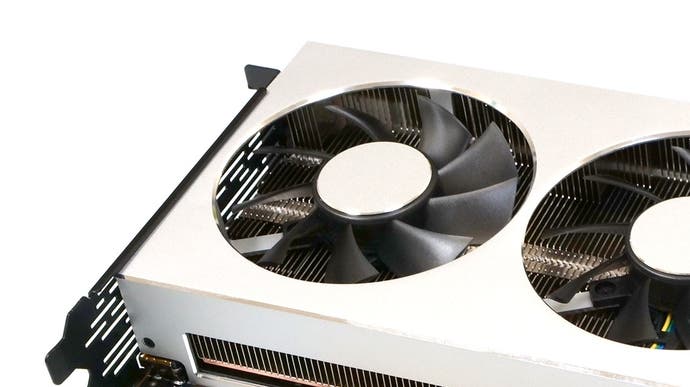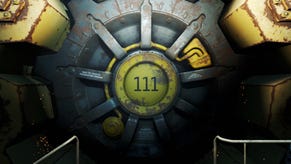AMD Radeon 7 benchmarks: the new top AMD card tested
With a 7nm process and 16GB of VRAM, can the Radeon 7 rival the RTX 2080?
Eighteen months after the launch of the Vega 64, AMD has released another high-end graphics card: the Radeon 7, stylised as the Radeon VII. As the cleverly chosen name reflects, this is the first GPU to be produced on a 7nm manufacturing process and the second take on AMD's Vega architecture, allowing for increased performance and power efficiency. AMD has positioned the Radeon 7 as a competitor to the Nvidia GeForce RTX 2080 at $700/£600, but without feature parity the Radeon card will need to represent a significant improvement from the newly reduced Vega 64 to stand a chance in the competitive graphics card market.
With 16GB of fast HBM2 memory operating at 1TB/s and 13.8 teraflops of computing horsepower on board compared to lesser amounts on the RTX 2080, the Radeon 7 certainly looks like a top performer. However, looking at specifications like these in isolation aren't a great predictor of actual performance, as everything from driver overhead to thermal consistency and power delivery will affect the final results. With that in mind, the best thing to do is actually test this new card in as many games as possible to see how it actually performs - and that's exactly what we've done.
So: is the Radeon 7 as powerful as AMD claims it is? It it actually faster than the RTX 2080 in recent games? Well, yes and no - the Radeon 7 is far and away the fastest AMD card we've ever tested, but it doesn't always outperform its closest competitor from Team Green.
Which GPUs are worth buying? We've made our picks for the best graphics cards available, updated with the latest graphics cards as they're released. As well as an overall performance champ, we name the best value graphics card and best cheap graphics card to guide your next upgrade.
The best way to show show you exactly how the Radeon 7 performs is to put it in context. For that reason, our results show the Radeon 7 alongside the RTX 2080 and several other close competitors. On the Nvidia side, that includes the two best Pascal cards (the GTX 1080 and GTX 1080 Ti) plus three high-end Turing cards (the RTX 2070, 2080 and 2080 Ti). We have also included the Vega 64, AMD's counterpart to the GTX 1080 and their previous best card, so you can get a sense of how AMD's Vega architecture has evolved in the past two years.
Our benchmarks are taken from ten different games released in the past six years, with each card tested at max settings (with a few notable exceptions). We have also included results for a wider range of AMD cards at the end of the article, so you can see how the Radeon 7 compares to previous generations.
We have included 1080p benchmarks here for completeness, but we strongly recommend not using this class of graphics hardware at 1080p. We ran into CPU bottlenecking at 1080p even with a heavily overclocked Core i7 processor; this can result in greater run-to-run variance than usual. That also suggests that older, less capable CPUs may exhibit similar issues at 1440p. Therefore, we recommend sticking with recent high-end (Core i7 and Ryzen 7) processors if you're targeting high frame-rates at 1080p or 1440p.
It's worth pointing out that the RTX cards we tested are Founders Edition models made by Nvidia. These come with a healthy factory overclock, in contrast to the AMD and Nvidia GTX cards in our tests that run at standard ('reference') speeds. That gives the RTX cards a small leg up in our tests, in the region of a few percentage points, but it is representative of out-of-the-box performance.

| GPU cores | Boost clock | TFLOPS | Memory | Memory Bandwidth | |
|---|---|---|---|---|---|
| Radeon 7 | 3840 | 1800MHz | 14.2 | 16GB HBM2 | 1024GB/s |
| Vega 64 | 4096 | 1546MHz | 12.7 | 8GB HBM2 | 484GB/s |
| RTX 2080 FE | 2944 | 1800MHz | 10.6 | 8GB GDDR6 | 448GB/s |
| GTX 1080 Ti | 3584 | 1582MHz | 11.3 | 11GB GDDR5X | 484GB/s |
As usual, we have used our bespoke benchmark system to show you the results of our testing. Whereas other sites use static graphs or data burnt into videos, we have opted for a more dynamic approach. Click play on each of the videos below, and you'll see how each card in the comparison handles the test scene in real time. This makes it far easier to see which effects or areas are problematic for different cards.
You can use controls on the right of the video to change which cards at which resolutions are shown. You can also take a look at bar charts below the video to get an idea of average performance. Here, mouse over the chart to see how each card performed at its best, at its worst and on average, and click on the chart to switch between absolute fps numbers and percentages. Now that we've covered how the system works, let's get into the results!
Assassin's Creed Odyssey
Our first title is also one of the newest in our roster: Assassin's Creed Odyssey, which was released in autumn 2018. The Radeon 7 shows a small improvement over the Vega 64 here, with a 13 per cent frame-rate increase at 1080p. This becomes more pronounced as the CPU becomes less of a bottleneck, with a 28 per cent advantage at 4K. However, the new AMD card still only just pulls level with the GTX 1080 Ti and falls between the RTX 2070 and RTX 2080; the RTX 2080 is seven per cent faster at 4K.
AC Odyssey: Ultra High, TAA
Assassin's Creed Unity
Despite being released close to five years ago, Assassin's Creed Unity remains a difficult challenge for modern graphics card - and particularly, it has to be said, for AMD hardware. The depth of field effect used in our test scene really messes with the Radeon 7's performance, cutting performance in half or worse whenever it occurs. That means that despite some moments of extremely high frame-rates, on par with the GTX 1080 Ti and RTX 2080, the Radeon 7 manages to finish dead level with the RTX 2070 at 1080p. As the resolution increases, AMD's new card becomes more competitive but it never surpasses the RTX 2080.
AC Unity: Ultra High, FXAA
Battlefield 1
Battlefield 1 is one of the best games for AMD graphics cards, and it's no different for the Radeon 7. The Radeon 7 outperforms the RTX 2080 at all resolutions we tested, which is impressive given that it is competing against an overclocked Founders Edition model. At the two lower resolutions, you're looking at frame-rates that will make the most of a 144Hz monitor, and the Radeon 7 still delivers a comfortable 85fps at 4K. The new AMD GPU carves out a 35 per cent lead over the Vega 64 at this resolution, which is an impressive generational leap.
Battlefield 1: Ultra, TAA
Crysis 3
Twelve years after Crysis first debuted, we are still using this series to test high-end computer hardware. Our tests use the highly explosive sequence from the Crysis 3 campaign, released in 2013. Here, the Radeon 7 outperforms the GTX 1080 and RTX 2070 but falls behind the GTX 1080 Ti, RTX 2080 and RTX 2080 Ti. That trend remains true at each resolution we tested, although the Radeon 7 does close the gap as resolution increases, with the RTX 2080 ultimately scoring an eight per cent higher average at 4K.
Crysis 3: very high, SMAA T2X
Far Cry 5
The surprisingly chill built-in benchmark from Far Cry 5 is where we'll head next. The Vega 64 and GTX 1080 are neck-and-neck in this test, so do we see a similar trend for the Radeon 7 and RTX 2080? Surprisingly, yes - the Radeon 7 is narrowly beaten out by the RTX 2080 at 1080p, but steals back the victory by an even tighter margin at 4K. Again, we're seeing a impressive leap in 4K performance from the last-generation Vega 64 to the Radeon 7; this time, it's 31 per cent.
Far Cry 5: Ultra, TAA
Far Cry Primal
Far Cry Primal may have reused the map from Far Cry 4, but it's still a fun game in its own right with a unique prehistoric setting. It also makes for a good benchmark, as we can see how the Radeon 7 fares on an older Far Cry title. The GTX 1080 Ti and RTX 2080 are near-identical here, with the Radeon 7 sitting just two or three percentage points behind at 1080p and 1440p. At 4K, the Radeon 7 becomes much more competitive, beating out the GTX 1080 Ti by five per cent and sitting just 1fps behind the RTX 2080. Given that the RTX card comes with a factory overclock, this could be chalked up as a win for Team Red.
Far Cry Primal: Ultra, SMAA
Ghost Recon Wildlands
In 2017, the most challenging game in our benchmark suite was released: Tom Clancy's Ghost Recon Wildlands. In the past couple of years, new graphics cards are still struggling with this test on its ridiculous ultra preset. The Vega 64 managed only 29fps at 4K, so can the Radeon 7 do much better? In a word, yes: the Radeon 7 is 29 per cent faster at 4K, with a perfectly playable average of 38fps. That's effectively the same as the GTX 1080 Ti and the RTX 2080, with only the RTX 2080 Ti scoring significantly higher at 47fps. If you actually want to play the game, we'd recommend the more practical high or very high presets, which still look great and increase performance dramatically.
Ghost Recon Wildlands: Ultra, TAA
Rise of the Tomb Raider
Rise of the Tomb Raider is the first of two Lara Croft titles in our benchmark suite, having been released in 2015. While this integrated benchmark does include three different scenes to test your PC's likely performance in different areas of the game world, it ultimately isn't a good representation of actual in-game performance - the full game is actually harder to run. Nonetheless, this test remains useful to see the comparative strengths of different video cards. The Radeon 7 is competitive with the RTX 2080 and GTX 1080 Ti, coming three per cent behind the former and five per cent behind the latter at 4K.
Rise of the Tomb Raider: Very High, SMAA
Shadow of the Tomb Raider
As well as being a rather excellent game, 2018 release Shadow of the Tomb Raider also comes with a much more meaningful benchmark than its predecessor. The Radeon 7 is able to outperform the GTX 1080 Ti at 1080p by a few frames per second, opening up into a significant eight per cent advantage at 4K. The RTX 2080 is better able to take advantage of the game's more modern engine though, with pace that rivals that of the Radeon 7 throughout. Again, given that the RTX cards do come with a factory overclock applied, the Radeon 7 is arguably the victor here.
Shadow of the Tomb Raider DX12: Highest, TAA
The Witcher 3
We conclude our benchmark suite with a game from 2015, The Witcher 3. As we ride Roach through the streets of Novigrad, the Radeon 7 offers a convincing 28 per cent lead over the Vega 64 at 1080p, rising to 33 per cent at 1440p and 36 per cent at 4K. The Radeon 7 also does well against the GTX 1080 Ti here, with a three per cent lead at 4K. However, the RTX 2080 and RTX 2080 Ti take the two top spots overall, with the cards delivering 4K averages of 60fps and 77fps, respectively.
The Witcher 3: Ultra, POST-AA, No Hairworks
Cross-generational comparison
We'll conclude with a look at how the Radeon 7 compares to its predecessors from Vega, the RX 500-series and beyond. You can see that the Radeon 7 pulls out one of the biggest intergenerational leads we've ever seen, with a 27 per cent gap over the outgoing Vega 64 at 1080p and 28 per cent at 1440p. Overall, it's a strong statement from AMD - and with a truly next-generation Navi card rumoured to be on the horizon for a potential launch this year, we may yet see even greater leaps from the American company before 2019 is out.
Assassin's Creed Unity: Ultra High, FXAA
With that, our AMD Radeon 7 benchmarks have come to a close. We encourage you to check out our full Radeon 7 review for more information on this card if you're considering it.
Now that you've seen the benchmarks for one card, why not check out see which PC hardware we recommend to our friends and family? Here are the DF picks for the overall best graphics cards and for the best gaming monitors on the market.









